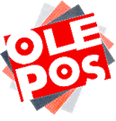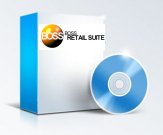OPOS was
the first widely-adopted POS device
standard. It was initiated by
Microsoft,
NCR,
Epson,
and
Fujitsu-ICL
to help integrate POS hardware into
applications for the
Windows
family of operating systems. OPOS
uses
COM
technology, and is therefore
language independent.
The first OPOS technical meeting was
convened in January, 1995. The first
production release, 1.01, was made
in March, 1996. Its seventh release,
1.6, was in July, 2001. Beginning
with release 1.7, the OPOS committee
no longer releases an
implementation-specific document.
The
UnifiedPOS document has added
implementation information into an
appendix.
The core membership was
established with a minimal number of
major players in the Retail
industry, so that initial work could
proceed quickly. The core committee
consists of Microsoft Corporation,
NCR Corporation, Seiko Epson
Corporation, and Fujitsu/ICL.
Following the initial release in
December 1995, one representative
each from Europe and Japan was added
to the core group, bringing its
membership to the current six. The
core committee is tasked with
general oversight of the initiative,
while all interested parties are
welcomed to attend general sessions
and provide input.
How would you like to
select any make of PoS hardware, any software, or
any peripheral - whatever offers the best
functionality and value - and plug-and-play?
How would you like to slash software maintenance and
upgrade costs? These are just some of the benefits
of OLE for PoS (OPoS).
Here, we describe briefly why this is the case. One
of the major challenges to developers of PoS
applications has been the lack of standards.
Developers must write code to target specific,
proprietary hardware platforms as well as to
proprietary peripheral devices. As new customers
demand different platforms and different sets of
peripherals, the application developer must devote
time and resources to rewriting the application to
conform to a wide range of proprietary equipment
specifications. This has been a traditional problem
in the industry, as there has been no standard way
of supporting multiple PoS platforms and multiple
peripheral devices.
The inefficiencies this has caused has had a ripple
effect throughout the industry, increasing costs for
developers and retailers, and ultimately inhibiting
most developers’ ability to sell PoS software to a
wide market. However, two years ago, four companies
(Microsoft, Epson, AT&T GIS (now NCR) and PSI) came
together to overcome this lack of standards -
generally recognised as one of the main impediments
to doing business in the PoS world. These companies
represent major shares of the retail market in their
respective sectors: operating systems; printers and
peripherals; PoS devices; software development and
integration. After nearly a year of effort, these
four companies made available the first release of
OLE for Retail PoS. This standard, released to the
public domain in November 1995, is available to any
developer free of charge.
As is well known, OPoS is not the only PoS software
standard currently in use. There is also JavaPoS,
intended to aid application development in the Java
environment. The concern has been that the existence
of two separate standards causes duplicate effort in
the industry, and confusion for the retailers.
Now, though, this is about to change. Because ARTS
(the Association for Retail Technology Standards)
has announced that it is to sponsor and administer,
in conjunction with the National Retail Federation (NRF),
a new standard which combines both OPoS and JavaPoS.
Called Unified-PoS, the new standard is defined as
an initiative to produce an architectural
specification which is both operating system
independent and language neutral. This means several
things to participants, principally that companies
can write applications to the standard using Java,
Visual Basic, or other languages, and implement
these applications on Microsoft, Sun, IBM etc., at
their discretion. Unified-PoS has received
widespread support, and interim guidelines are
available now. We will keep you informed through the
pages of Retail Update.
OLE For Retail POS (OPOS) was initiated in 1995 by
four companies (NCR, Microsoft, Epson, and PSI/ICL)
to define an industry standard method of interfacing
to POS peripherals. OPOS uses COM/ActiveX (formerly
OLE) technology, and is therefore language
independent.
The OPOS model requires a device-independent Control
Object for each device class (POS Printer, Cash
drawer, Line display, etc), which is generally
shipped with the application. The Control Object is
implemented as an ActiveX Control (OCX) which is
invisible at runtime and exposes the device
functionality to the application via properties,
methods and events.
Hardware vendors must provide a device-dependent
Service Object for their peripherals. The Service
Object is called by the Control Object and
implements the device-specific functionality.
|





